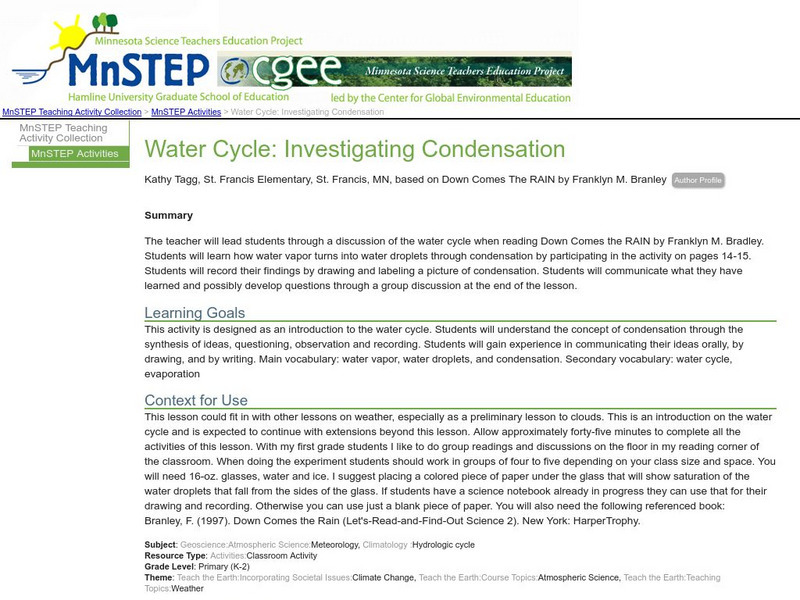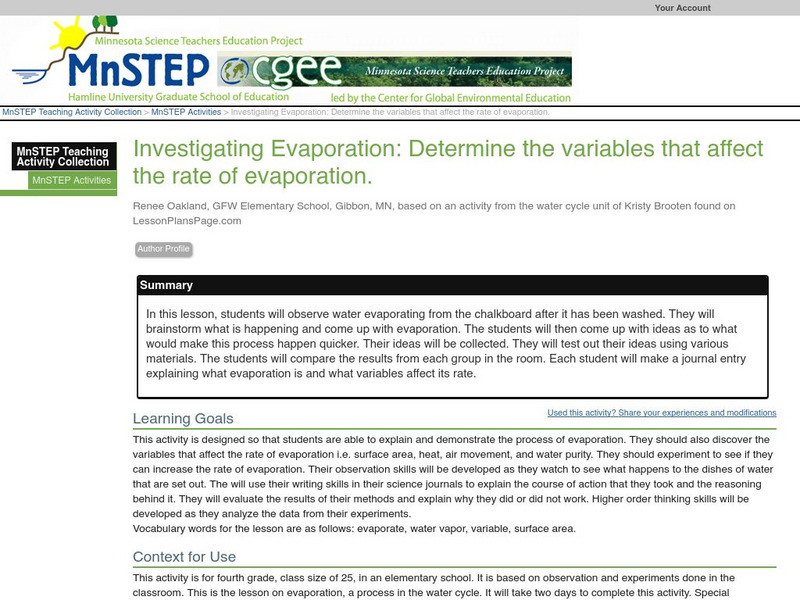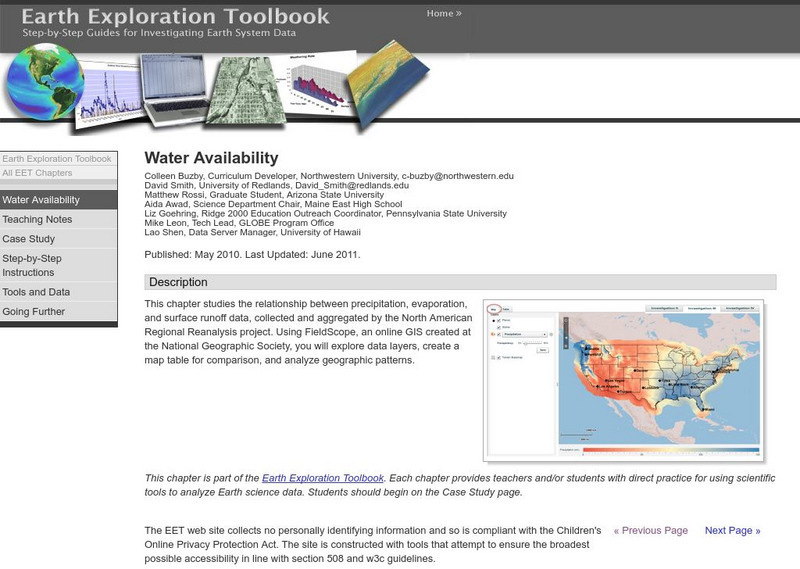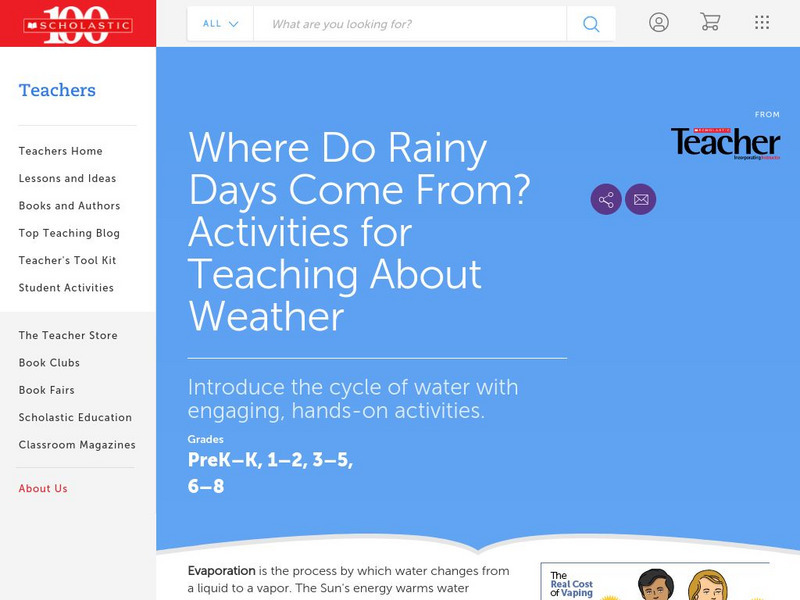Utah Education Network
Uen: Trb 4:1 Investigation 6 Water on the Move
Activity provides an understanding of the water cycle.
TeachEngineering
Teach Engineering: Ocean Water Desalination
Students learn about the techniques engineers have developed for changing ocean water into drinking water, including thermal and membrane desalination. They begin by reviewing the components of the natural water cycle. They see how...
Science Education Resource Center at Carleton College
Serc: Mn Step: Water Cycle: Investigating Condensation
Young scholars will listen to a story about the water cycle, observe how water droplets form on a glass of icy water, then draw and label a picture showing condensation.
Science Education Resource Center at Carleton College
Serc: Mn Step: Weather/water Cycle
In this activity, students will learn about the water cycle through a story, a song, and a game, and relate it to the weather that they observe.
American Chemical Society
Middle School Chemistry: Changing State: Condensation
Students investigate water cycle processes by testing how cooling affects the rate of condensation of water vapor.
PBS
Pbs Learning Media: Ways of Watersheds
Learn about the four phases of the water cycle, the ways in which watersheds are crucial to healthy water, and the best ways to manage local watersheds with this interactive lesson.
American Chemical Society
Middle School Chemistry: Changing State: Evaporation
Students build a model of a water molecule and design an experiment to see if adding energy affects the rate of evaporation.
Science Education Resource Center at Carleton College
Serc: Evaporation: Determine the Variables That Affect the Rate of Evaporation
In this instructional activity, students will be able to explain and demonstrate the process of evaporation while discovering the variables that affect the rate of evaporation.
Science Education Resource Center at Carleton College
Serc: Water Availability
This instructional activity helps students discover the relationship between precipitation, evaporation, and surface runoff data. Using FieldScope, an online GIS created at the National Geographic Society, students will explore data...
Science and Mathematics Initiative for Learning Enhancement (SMILE)
Smile: Weather
This lesson plan focuses on teaching students to distinguish among the evaporation, condensation,and precipitation phases of the water cycle.
Scholastic
Scholastic: Where Do Rainy Days Come From?
Find out more about rainy days when you check out this resource, which features hands-on interactive activities, experiments, fun facts, and more.









